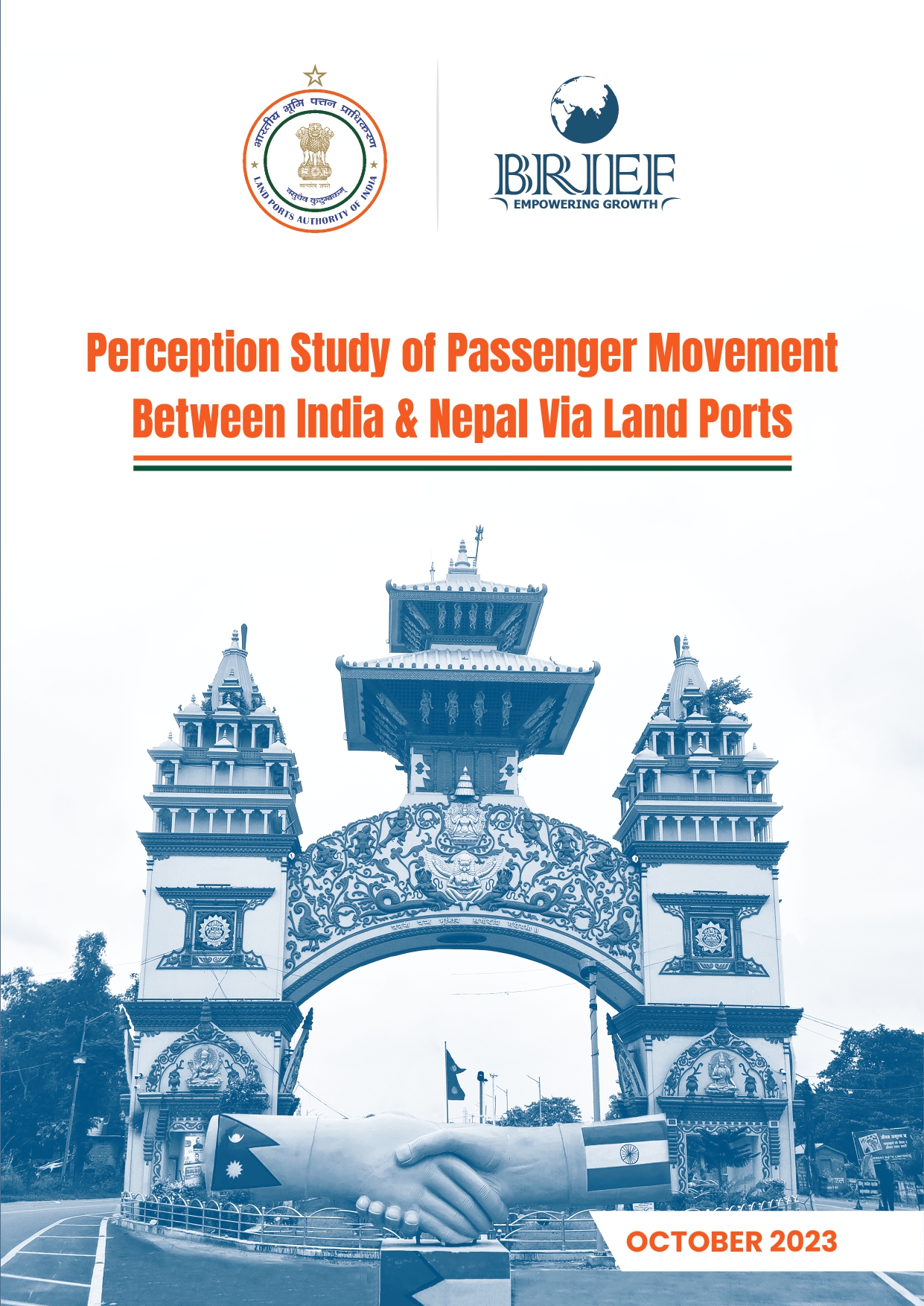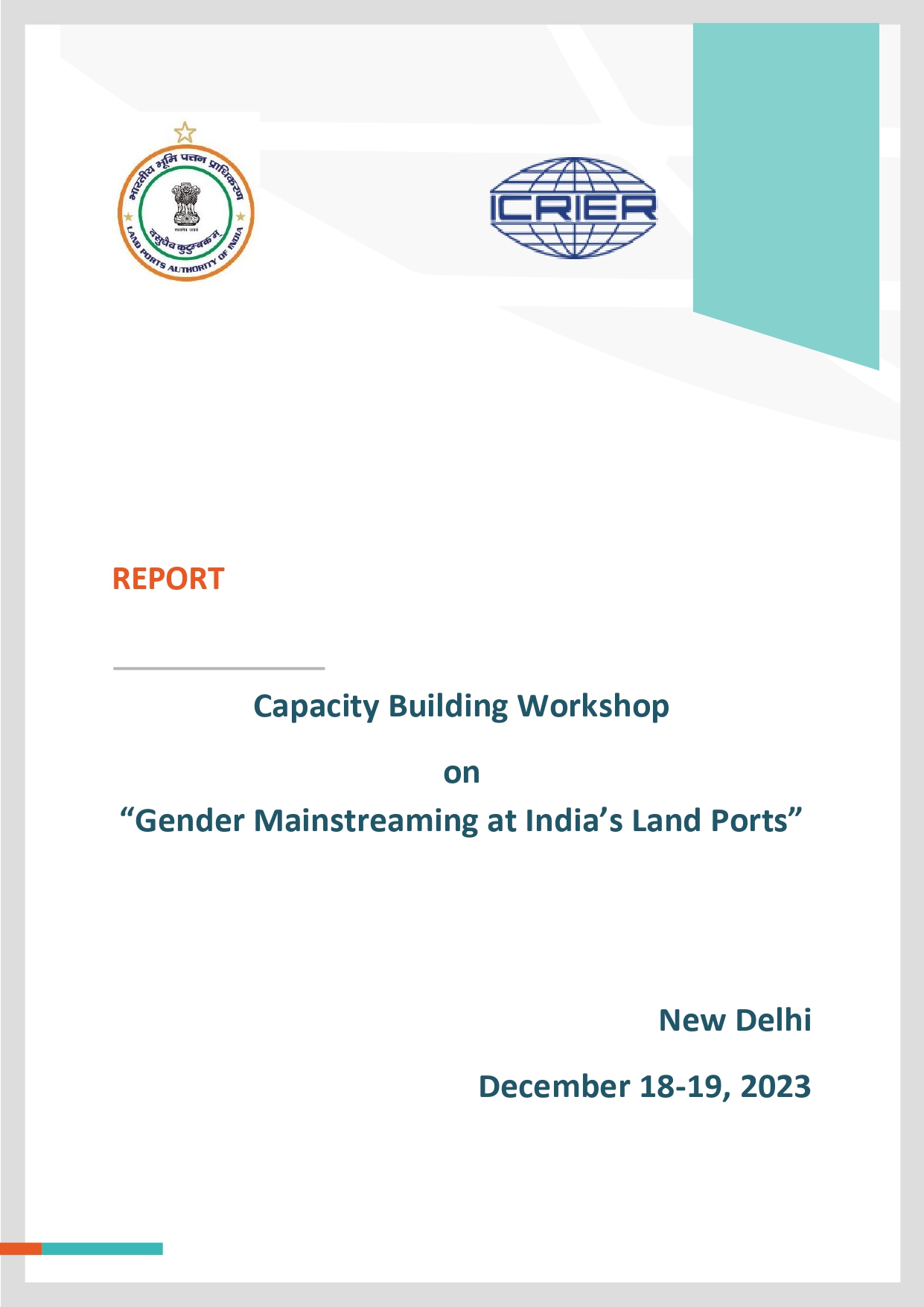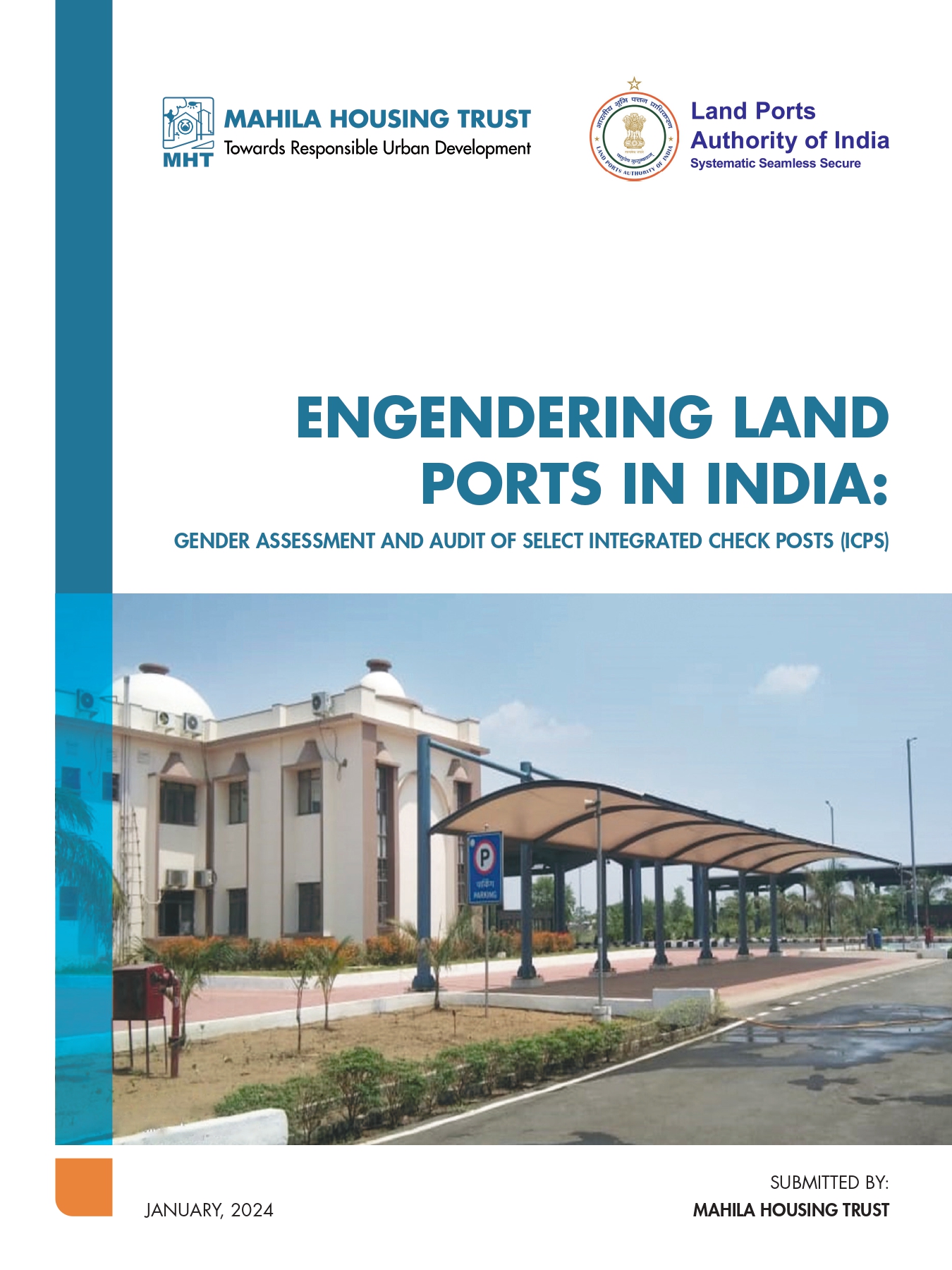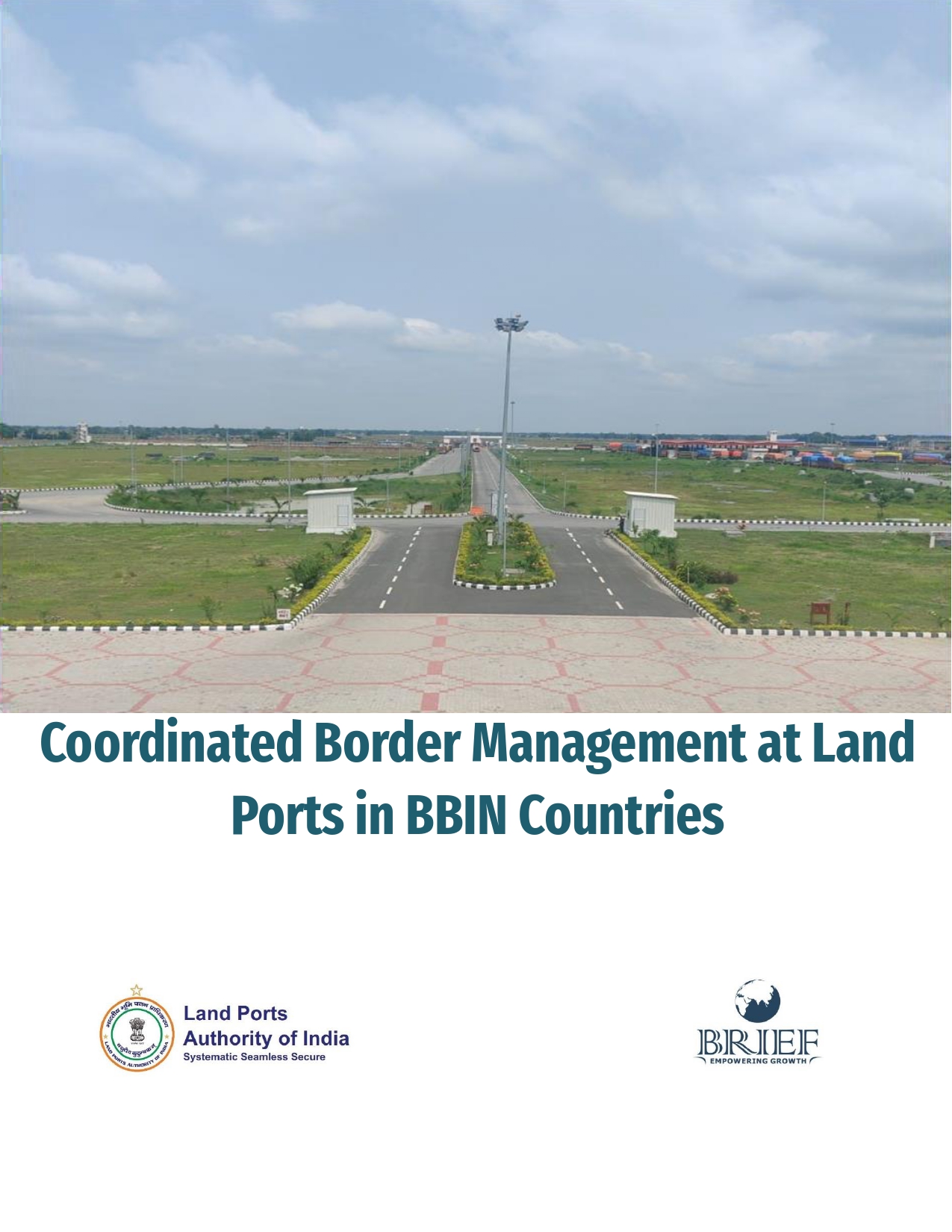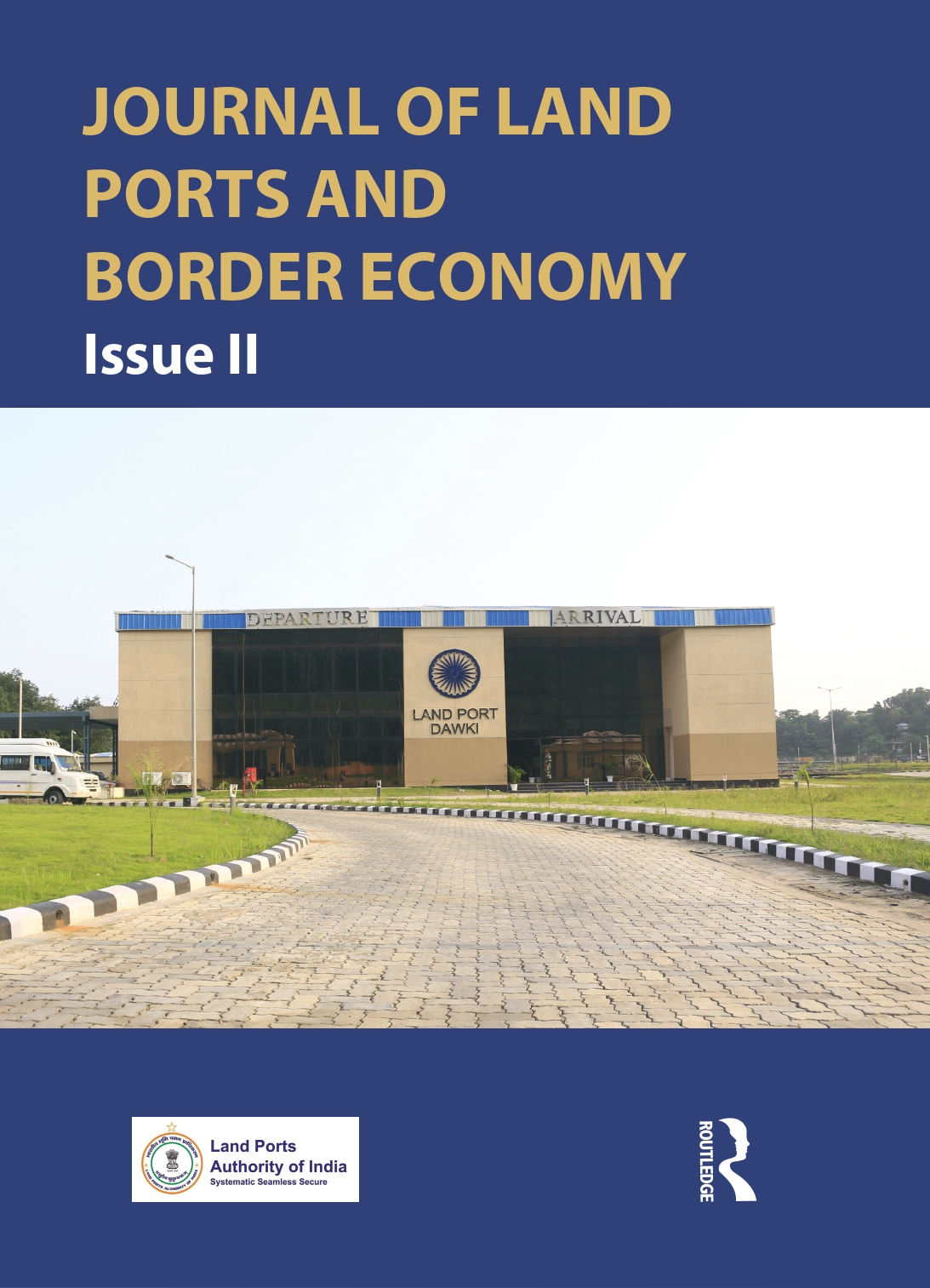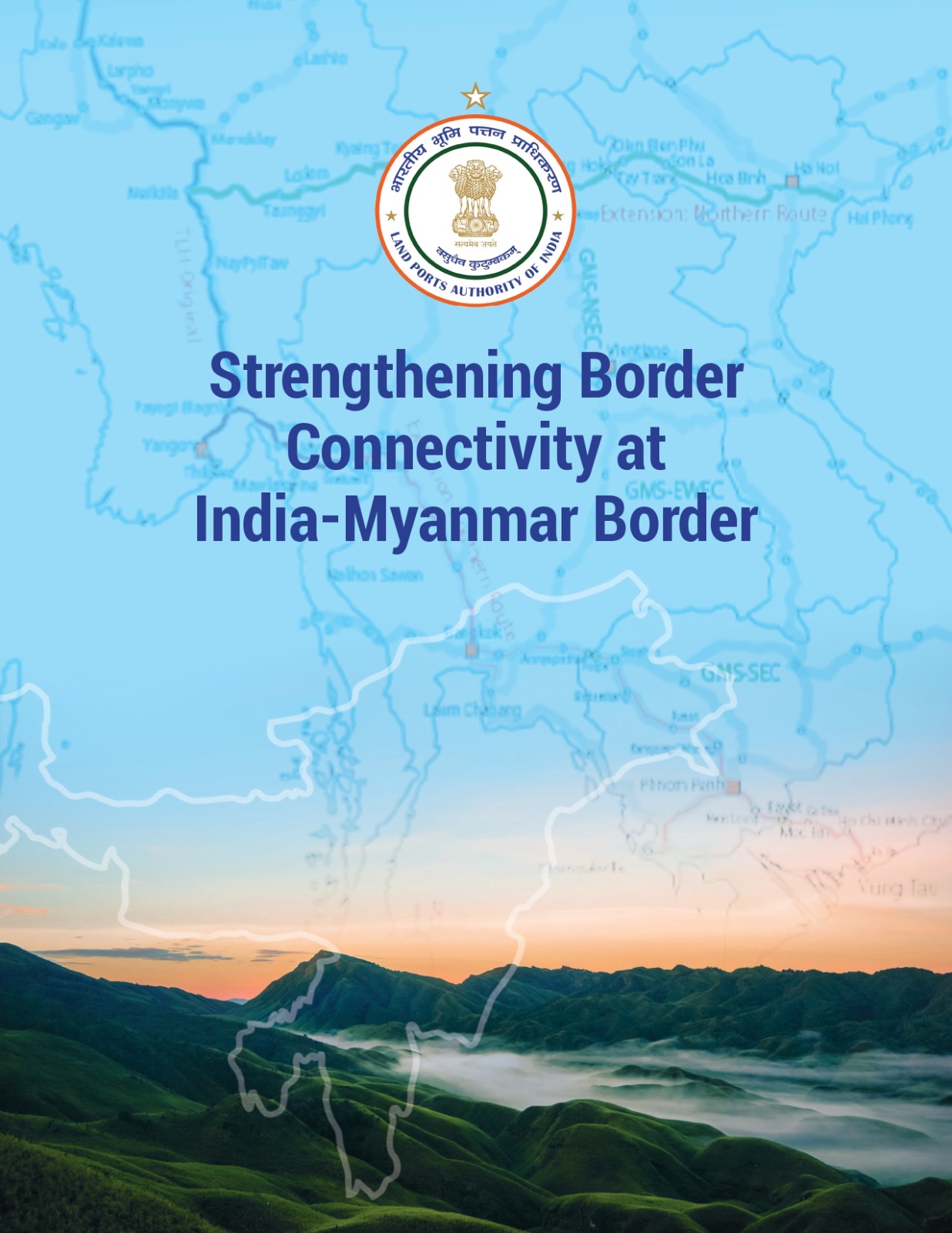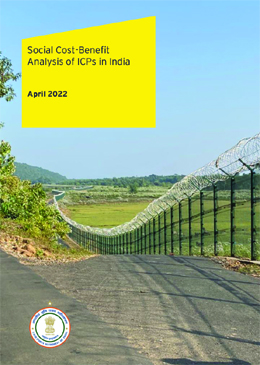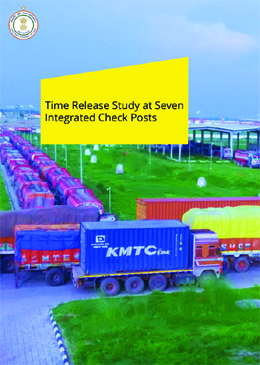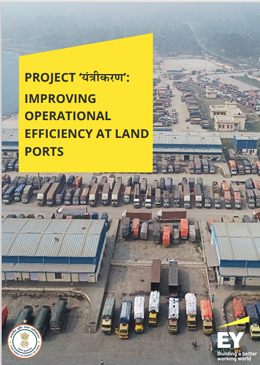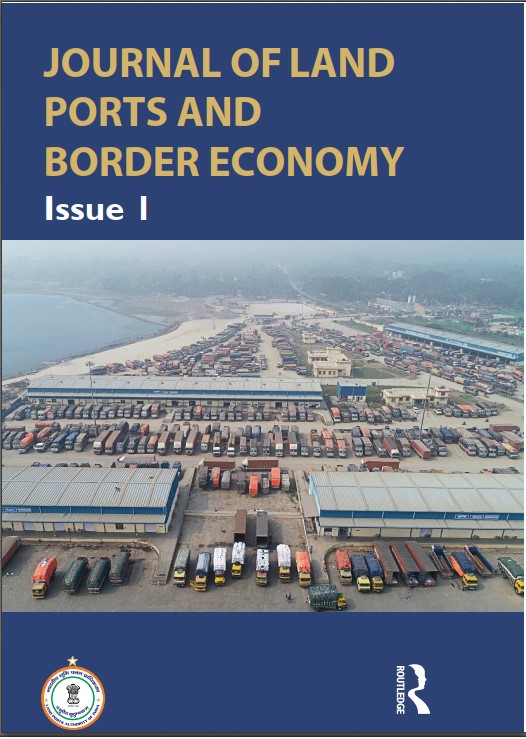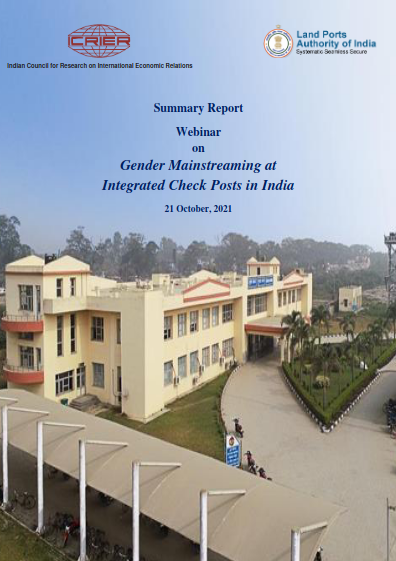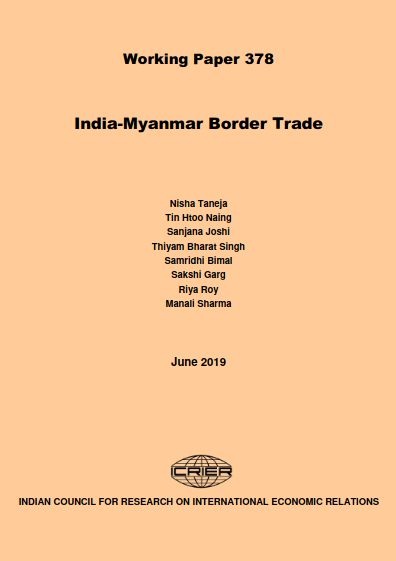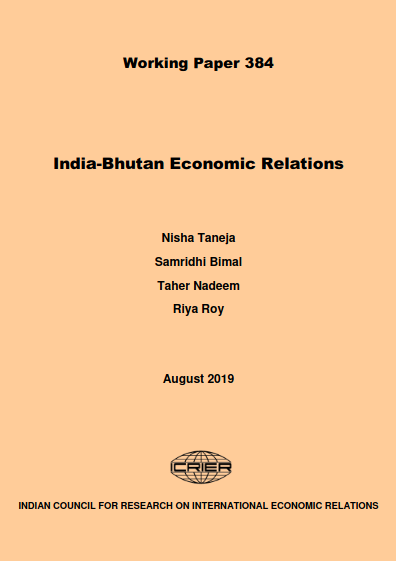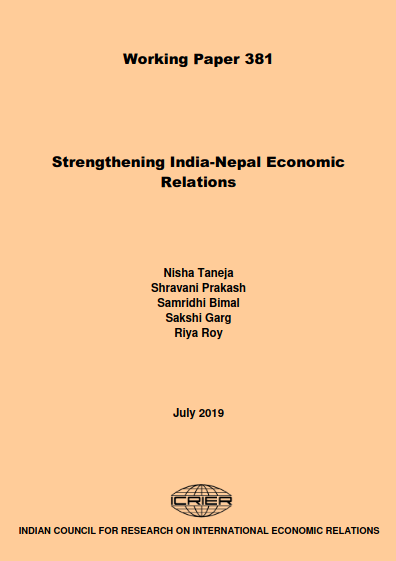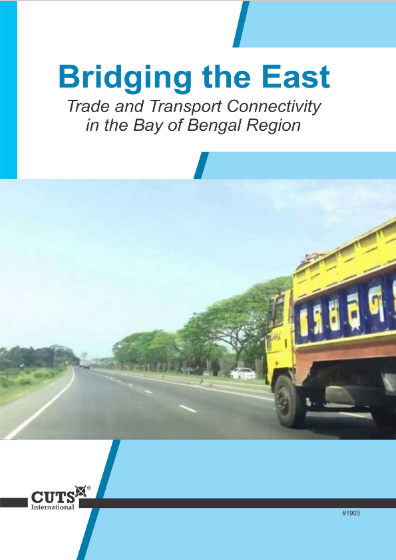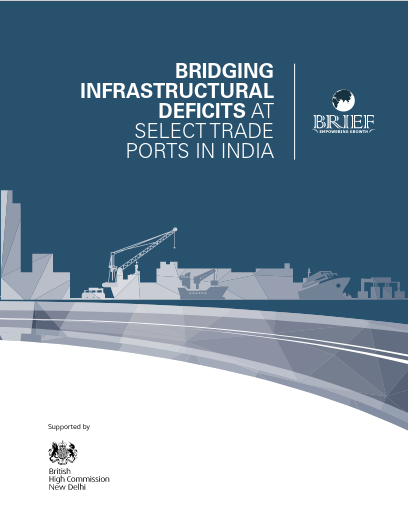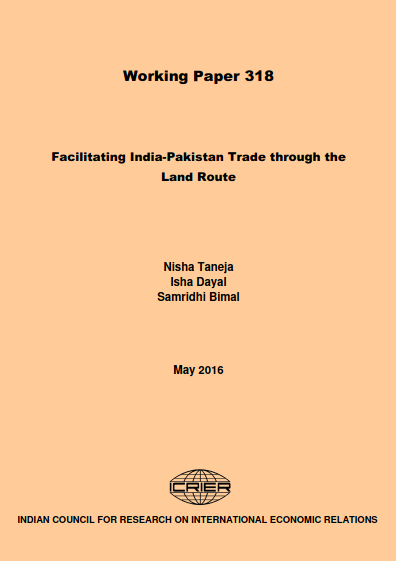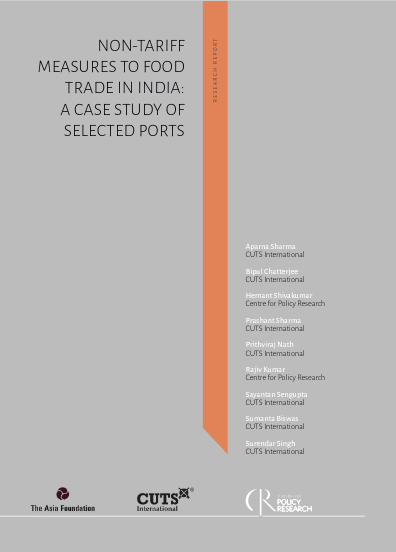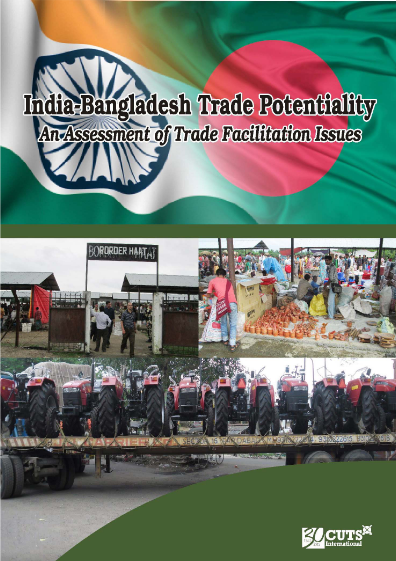Perception Study of Passenger Movement Between India & Nepal Via Land Ports
The research report on the "Perception Study of Passenger Movement Between India and Nepal Via Land Ports" examines the significant socio-economic and infrastructural dynamics affecting passenger travel across the India-Nepal border. Grounded in the framework of the 1950 India-Nepal Treaty of Peace and Friendship, which allows for the unrestricted movement of goods and people, the study highlights the extensive use of road transport through multiple land ports that facilitate this bilateral movement. In 2019-20, prominent land ports like Raxaul saw nearly 293,000 passengers crossing the border, emphasizing the scale of mobility. The research identifies key challenges in the current setup, including the non-issuance of travel permits at the border by Indian authorities, lengthy permit processing times at the Indian Embassy, stringent documentary compliance including costly bank guarantees, and severe congestion at border points. These issues are compounded by inadequate infrastructure, such as limited parking and poor facilities, which hinder the efficient and secure movement of passengers. The study advocates for the utilization of Integrated Check Posts (ICPs) to centralize and streamline border crossing procedures, proposing them as single-window solutions for bilateral passenger movement. It suggests operational improvements such as direct permit issuance at borders, enhanced vehicle insurance protocols, and better infrastructure at ICPs to support passenger and vehicle flows. By aligning operations with the BBIN Motor Vehicles Agreement, the report foresees a reduction in logistics costs and an enhancement in bilateral trade and people-to-people connections. Stakeholder feedback collected during the study indicates a preference for shifting traffic through ICPs, aiming to improve both operational feasibility and user satisfaction. The findings aim to guide future infrastructure developments and process optimizations to facilitate smoother and more efficient cross-border movement, ultimately benefiting the economic and social ties between India and Nepal.
Capacity Building Workshop on “Gender Mainstreaming at India’s Land Ports”
The two-day capacity-building workshop on gender mainstreaming at India's land ports was organized by the Land Ports Authority of India (LPAI) in collaboration with the Indian Council for Research on International Economic Relations, (ICRIER) at New Delhi on 18-19th December, 2023. The objective of the workshop was to create awareness of the need to integrate gender considerations in processes and behaviour and build capacity among the various agencies operating at the land ports to adopt targeted measures that can create an enabling environment for women at the land ports.More than thirty participants drawn from various agencies, including LPAI, Bureau of Immigration, Customs, Border Security Force (BSF), Sashastra Seema Bal (SSB), Ministry of Health and Family Welfare, and Regional Plant Quarantine stations attended the workshop.
Engendering Land Ports In India
Regional trade in the Bhutan, Bangladesh, Northeast India and Nepal (BBIN) region has significant potential to impact economic growth and reduce poverty in South Asia. There have been constant efforts by the Government of India (GoI) towards enabling this especially through improved transport and trade facilitation measures along its land borders. It is important to ensure that these measures contribute to socio-economic development of both men and women. Trade and transport facilitation measures, however have major gender implications. As cross-border trade increases, certain economic sectors grow and some contract. Given the occupational segregation by gender across the economic sectors means that the trade will impact men and women differently.
Women are also direct participants in cross border activities in various ways: as passengers, as producers of tradable goods and services (especially tourism), as small-scale cross-border traders and as owners of exporting firms. Further trade facilitation measures also impact the local economy around the ports creating employment and entrepreneurship opportunities. Women’s participation in cross-border trade and transport in the BBIN region, however, has been low. The key impediments and barriers that hinder the participation of women in cross-border trade in the BBIN region include: a) Institutional Challenges like business and traders associations around the border areas are largely male dominated and women entrepreneurs and traders are not being organized enough to be able to jointly voice their concerns; b) Infrastructure Barriers especially absence of safe and reliable transport facilities; c) Information and Regulatory Challenges including the lack of information on trade procedures and rules and regulations related to international trade; and considerable difficulties faced in dealing with customs and trade officials, who are usually males; and d) Social Barriers mainly related to gendered perceptions and vulnerability to harassment.
Land ports, also known as Integrated Check Posts (ICPs) are a crucial initiative of the GOI as part of these efforts towards improved infrastructure facilities and policy reforms for promoting cross border trade in the BBIN region. Towards this the Land Ports Authority of India (LPAI) has undertaken a number of measures including modernisation of infrastructure and integration of services at one-stop. The LPAI is now committed to improving gender responsiveness of land ports. Towards this a gender audit toolkit for land ports was developed as a framework for gender inclusive cross-border trade and tourism through land ports in India. The toolkit uses an objective scoring index to rank all land ports (ICPs) on a scale of 0 to 1 across different points to asses if they are missing minimum requirements(0-0.20); they approach minimum requirements (0.21-0.40); satisfy minimum requirements (0.41-0.60); have considerable gender responsiveness (0.61-0.80); or are significantly gender responsive (0.80-1.0).This report brings to light the findings of the application of the gender audit toolkit and gender assessment undertaken at three (3) select land ports in India- ICP Agartala, ICP Petrapole and ICP Raxaul.
Coordinated Border Management at Land Ports in BBIN Countries
Nepal, Bhutan and Bangladesh have progressively emerged as India’s close allies, fostering meaningful engagements as a part of its ‘Neighbourhood First’ and ‘Look East’ policies. Further, intra-regional trade remains a key thrust area to ensure sustainable growth in the region. Over the years, several initiatives have been taken by Indian agencies to improve cross-border trade with the neighbouring countries. The Land Port Authority of India (LPAI), has established many Integrated Check Posts (ICPs) at the border crossings to facilitate the processes of immigration, customs, security, quarantine, etc. Despite these developments, to improve cross-border trade, more needs to be done to improve border management as delays due to physical and non-physical barriers continue to hamper smooth movement of goods in the region. Inadequacies with respect to screening facilities, parking infrastructure, warehouses, testing facilities, etc. are visible at various border points. To facilitate faster cross-border trade and increase competitiveness, coordinated border management, entailing synchronized and synergized documentation, development of common infrastructure as well as alignment of working hours and procedures at these border points is of utmost importance. This also aligns with the vision of the Government of India as part of the NTFAP (National Trade Facilitation Action Plan) Action Point 10 (Reference TFA provision: 8.2) and towards achieving the NTFAP target of bringing down the average import release time to 48 hours and average export time to 24 hours for land ports. In consonance with the aforementioned context, this study provides an action plan for setting up coordinated border management between India and its neighbours (Bangladesh, Bhutan and Nepal), while carefully assessing the feasibility of common facilitation, in terms of development of infrastructure and alignment of regulatory procedures.
Journal of Land Ports and Border Economy Issue II
The second issue of the Journal of Land Ports and Border Economy features a comprehensive selection of research papers that delve into various dimensions of trade and development. The development and upgradation of transit points by the Land Ports Authority of India (LPAI) has been instrumental in fostering the growth of the border economy. The current issue of the Journal captures India’s remarkable voyage in border management, showcasing its significant strides, advancements, and notable achievements. The contents encompass a Foreword by the Chairman of LPAI, an introduction by Managing Editor, and a compelling collection of six research papers authored by renowned scholars and practitioners. Additionally, the second issue of the Journal of Land Ports and Border Economy also includes a valuable book review, providing readers with an insightful analysis and offering them the benefits of critical evaluation and a broader perspective on India’s approach to Border Management.
Strengthening Border Connectivity at India-Myanmar Border
The North Eastern Region of India (NER) is the gateway to Southeast and East Asia. However, transport and logistics bottlenecks have long been identified as serious constraints to the growth of the NER. Trade has special significance for the economies of the NER states. The value chain potential of the NER can be unlocked if border infrastructure and transportation networks, in particular, are improved. The Moreh Integrated Check Post (ICP) at the India-Myanmar border assumes critical importance as it is the land bridge connecting India and Southeast Asia. Strengthening border infrastructure in and around Moreh ICP may generate strong catalytic force not only for facilitating trade between ASEAN and India but also for improving the country’s competitiveness. This study has assessed the status of border area development at Moreh and the potential intra- and inter- regional economic linkages of the NER in the context of border infrastructure and ongoing connectivity projects with Myanmar. The study has addressed the issues related to the challenges and bottlenecks at the India-Myanmar border, institutional arrangements and provides policy recommendations to augment the border connectivity for the LPAI and other central and state agencies.The passenger movement between from the Moreh border has increased considerably over the last few years. Trade at More-Tamu is mostly informal. India’s total export potential is about US$ 1.45 billion in 2018 as against India’s actual export of US$ 1.23 billion to Myanmar. India has export potential in the sectors like automobiles, pharmaceuticals, food processing items, mineral products and iron and steel. This unmet potential offers new business opportunities, provided the border barriers to trade are removed. In addition, the ocean and land route rates analysis of the study shows that it takes about 12 days to ship cargo containers from JNPT, Mumbai to Port of Yangon (Myanmar) through the ocean routes. While it takes only 7 days to ship cargo containers from Mumbai to Yangon through land routes. This study recommends that the NER has to improve its ‘backend’ infrastructure, which would not only help the region to raise its competitiveness but also narrow the development gaps. The NER states must complete ongoing rail, road, inland water transport, and aviation projects on a fast-track basis and improve border infrastructure with adequate storage facilities, testing labs, etc. In parallel, we must work together to bring synergy in trade procedures with Bangladesh and Myanmar and build express corridors for special goods. Paperless trade and interoperability of the Customs Single Window should be taken up. Institutions are needed to support the connectivity programmes. Completion of the TH is likely to facilitate faster movement of goods and people between India and ASEAN via the Moreh ICP and add growth impetus to the NER. The present institutional linkages are no doubt improving, but these have to be strengthened further to support the connectivity projects between India and Southeast Asia.
Gender Mainstreaming at India’s Land Ports
India shares a land border of over 15000 km with seven countries – Afghanistan, Pakistan, Nepal, China, Bhutan, Myanmar and Bangladesh, and the land ports operate as key gateways for trade with neighbouring countries. However, the impediments faced by women at the land borders are a major reason for the low level of female participation in regional trade. Gender mainstreaming is important as policy actions tend to be ‘gender neutral’ or ‘gender blind’ and overlook the differences in the impact on men and women. This study is one of the first attempts in India to develop a comprehensive template for a gender lens assessment of hard and soft infrastructure at land ports, as a crucial input into incorporating a gender mainstreaming strategy in trade facilitation measures at the land ports. The study provides an evidence-based, gender-lens analysis of both hard and soft infrastructure gaps and safety related challenges that combine with existing socio-cultural barriers to constrain women and perpetuate a challenging environment for them at the land ports in India. In tandem, the report recommends targeted gender mainstreaming actions to make the land port environment and operations gender responsive. While prepared with the particular objective of making India’s land ports gender friendly, the report can also serve as a useful reference guide for other agencies involved in trade facilitation in adopting a gender mainstreaming approach, both within India as well as in other developing countries. To facilitate the participation of women in international trade by making the land port environment and operations more gender responsive and friendly, the study presents an Action Plan for Gender Mainstreaming at India’s Land Ports. With focus on seven key areas – information, infrastructure, digitisation, facilitation, staffing, outreach, and capacity building – the action plan lists the enabling measures needed both at the land ports as well as the overall ecosystem to increase women’s participation in international trade.
Social Cost-Benefit Analysis of ICPs in India
Land Ports Authority of India (LPAI) envisions to provide state-of-the-art infrastructure to facilitate trade and travel. To achieve its mission to build secure land ports on India‘s borders and to develop seamless and efficient systems for cargo and passenger movement, in order to reduce time and transaction costs, LPAI plans to upgrade Land Customs Stations (LCS) into Integrated Check Post (ICP) in a selective and phased manner. This Report highlights the socio-economic cost-benefit analysis of integrated check-posts in India. This study calculates the EIRR of ICP Petrapole and does a qualitative study of other ICPs across India. The study also delves into model sensitivities to check the robustness of returns, and lastly, the study also includes a section on the impact of ICPs on India’s bilateral relations with its neighbours.
Land Customs Station Evaluation Report
Land Ports Authority of India (LPAI) envisions to provide state-of-the-art infrastructure to facilitate trade and travel. To achieve its mission to build secure land ports on India‘s borders and to develop seamless and efficient systems for cargo and passenger movement, in order to reduce time and transaction costs, LPAI plans to upgrade Land Customs Stations (LCS) into Integrated Check Post (ICP) in a selective and phased manner. A detailed study of LCS, Immigration Check Post (ImCP) and Border Trade Center (BTC) (hereinafter called the “LCS” for purpose of evaluation study) has been conducted for upgradation to ICP. The study has been undertaken to evaluate LCS on eight key indicators based on Export & Import, Connectivity, International Treaties & Agreements, Immigration, Infrastructure availability, Industry & Market, Region and Tourism. The study has shortlisted LCS for upgradation to ICP and has proposed prioritized development for these LCS along with the requisite/infrastructure.
Time Release Study at Seven Integrated Check Posts
LPAI is statutory body working under Ministry of Home Affairs, Government of India. LPAI is responsible for creating, upgrading, maintaining and managing border infrastructure in India. One of the major functions of LPAI is to develop and maintain ICP. An ICP acts as an integrated facility for trade facilitation and passenger movement. As per the mandate of NTFAP, LPAI had decided to undertake time release study at seven operational ICPs: Attari, Agartala, Jogbani, Petrapole, Raxaul, Srimantapur and Sutarkandi. The Report presents the findings of the time release study at the seven ICPs as per guidelines World Customs Organisation. The study has calculated current release times through each ICP, benchmarked the release time for future studies, identified bottlenecks in clearance process and suggested necessary measures to improve efficiency and effectiveness of border procedures.
Project ‘यंत्रीकरण’: Improving Operational Efficiency at Land Ports
Owing to its central geographical location in South Asia, the land ports located along India’s international border of 15,104 kms play a crucial role in facilitating regional trade and connectivity in South Asia. However, the low levels of mechanization at land ports have limited the realization of operational efficiency and often resulted in high transaction time and cost of trading across borders. In order to optimize the gains of trade facilitation at land borders, India’s National Trade Facilitation Action Plan 2020-23 has suggested improving cargo handling efficiency at India’s Integrated Check Posts (ICPs) through increased mechanization (vide Action Point #57).
LPAI is the key regulatory agency responsible for building, operating and managing ICPs which are consolidated infrastructure facilities that house all Participating Government Agencies (PGAs) responsible for cross-border trade. This Report has been prepared with an objective of supporting LPAI implement the aforementioned mandate of NTFAP 2020-23. Using a Capability Maturity Model, a survey was conducted at seven ICPs to gauge maturity level of the existing mechanization in operations and identify areas where improvements are required. Based on the current state assessment and gaps identified, the Report has proposed a list of initiatives to be implemented at each ICP. The Report ...
JOURNAL OF LAND PORTS AND BORDER ECONOMY ISSUE-I
Journal of Land Ports and Border Economy is the primary publication of the Land Ports Authority of India (LPAI), which has distinguished itself as a leading developer for land port and border development. Widely consulted by researcher scholars, educators and practitioners, the journal encourages the submission of papers from all social science and humanities focusing on the development of land ports, generation of border economies, border issues and geo-political and security-related dynamics between borders in any part of the world. The distinctive purpose of the Journal of Land Ports and Border Economy is to publish original research covering the development of theories and concepts, methodological perspectives, empirical analysis and policy debate in the field of land port development and border studies with particular reference to India. The journal is an interdisciplinary forum, which showcases diverse perspectives and analytical techniques
The inaugural issue of the Journal of Land Ports and Border Economy presents a set of research papers covering various facets of trade and development. The development of transit points by the Land Ports Authority of India (LPAI) has triggered the development of border economy. This inaugural issue of the Journal of Land Ports and Border Economy captures India’s journey in border management and its progress and achievements. It includes a Foreword by the Chairman of LPAI, an introduction and nine research papers, written by eminent scholars and practitioners.
...
WEBINAR ON ‘GENDER MAINSTREAMING AT ICPs’
In a first of its kind initiative, the Land Ports Authority of India (LPAI) in association with the Indian Council for Research on International Economic Relations (ICRIER) organized a webinar on gender mainstreaming at the Integrated Check Posts (ICPs) in India. Gender Mainstreaming refers to an inclusive approach to public policy involving the integration of a gender perspective into the preparation, design, implementation, monitoring and evaluation of policies, regulatory measures and spending programs.
The webinar was supported by the FICCI Ladies Organization (FLO), Federation of Freight Forwarders' Associations in India (FFFAI), and the Association of Multimodal Transport Operators of India (AMTOI).
RESEARCH ON ICPs IN INDIA
Disclaimer: The paper was first published on the website of the Centre for Social and Economic Progress
Linking Land Borders: India’s Integrated Check Posts
Riya Sinha | June 2021
This paper examines the role of India’s Integrated Check Posts (ICPs) in South Asia in facilitating regional connectivity. The ICPs are entry and exit points on India’s land borders and house various facilities such as customs, immigration, and border security, quarantine, among others, within a single facilitation zone. Formulated in the early 2000s in the aftermath of the Kargil War (1999) and initiated since 2012, the ICPs have helped streamline cross-border trade and passenger flows through the modernisation of border management infrastructure. In 2019-20, 40% of India’s total trade with Bangladesh, Nepal, Myanmar, and Pakistan took place through the six ICPs at Agartala, Petrapole, Raxaul, Jogbani, Moreh and Attari.
However, several challenges such as the lack of mirror infrastructure in the neighbouring countries, limitations in public-private partnership, and ground-level issues including inadequate warehousing space to handle increasing volumes, ...
Disclaimer: The paper was first published on the website of the Indian Council for Research on International Economic Relations (ICRIER)
India-Myanmar Border Trade
Nisha Taneja, Tin Htoo Naing, Sanjana Joshi, Thiyam Bharat Singh, Samridhi Bimal, Sakshi Garg, Riya Roy and Manali Sharma| 2019
As India seeks to strengthen trade, investment and other forms of economic cooperation with ASEAN, Myanmar is an essential strategic partner, since it is the only ASEAN nation with which India shares both land and maritime borders. As a ‘gateway’ to South East Asia, Myanmar is also vital in terms of economic development for India’s North East Region (NER). India shares a 1643 km long border in four north-eastern states – Arunachal Pradesh, Nagaland, Manipur, and Mizoram - with Myanmar and this geographical proximity provides opportunity for the hitherto economically isolated northeast states of India to link to economic opportunities and markets in the east, building on their strong historical socio- cultural and economic linkages with Myanmar. To this end, India’s Act East Policy is increasingly being projected as the new economic development strategy for India's NER envisaging deeper economic integration of the region with
...
Disclaimer: The paper was first published on the website of the Indian Council for Research on International Economic Relations (ICRIER)
India-Bhutan Economic Relations
Nisha Taneja, Samridhi Bimal, Taher Nadeem and Riya Roy | 2019
The year 2018 was a milestone year for India-Bhutan relationship as the countries celebrated the accomplishments of the last fifty years of time-tested and special ties. The mutually beneficial economic ties have been the centre-piece of India-Bhutan relationship. India is Bhutan’s largest export market, the biggest source of its imports and one of the top foreign investors in the country. India also provides Bhutan transit facility through its territory to access sea ports for trading with rest of the world. Cooperation in hydropower projects is one of the most significant examples of win-win cooperation between India and Bhutan. These projects are a reliable source of inexpensive and clean electricity to India, a major contributor towards Bhutanese GDP and strengthening India-Bhutan economic integration. Bhutan has been pivotal to two of India’s major foreign policies – the ‘Neighborhood First Policy’ and the ‘Act-East Policy’. After coming into power in 2014, the Narendra Modi-led BJP government has laid special emphasis on India’s neighborhood as well as
...
Disclaimer:The paper was first published on the website of the Indian Council for Research on International Economic Relations (ICRIER)
Strengthening India-Nepal Economic Relations
Nisha Taneja, Shravani Prakash, Samridhi Bimal, Sakshi Garg and Riya Roy | 2019
India and Nepal have traditionally shared a unique relationship of friendship and economic cooperation. The relationship is characterized by an open and people-friendly border and is built on shared historical, cultural, linguistic, ethnic links between people residing in India and Nepal.
With Nepal being a priority under India ‘Neighborhood First’ policy, strengthening the economic relationship holds immense significance and potential for both the countries. India is Nepal’s largest export market, the biggest source of its imports and the top investor of foreign capital stock. India also provides Nepal transit facility through its territory to access sea ports for trading with rest of the world.
Given this, the main objective of this paper is to suggest policy measures which can increase bilateral trade and investment between India and Nepal. We analyse the bilateral trade patterns and estimate the maximum additional ...
Disclaimer:The paper was first published on the website of Consumer Unity & Trust Society (CUTS) International
Bridging the East: Trade and Transport Connectivity in the Bay of Bengal Region
CUTS International | 2019
An integrated South Asia has remained an aspiration of many down the ages. Several challenges have stood in the way of conversion of physical proximity from a liability to an asset. It is a fact that South Asian countries find it more convenient, and as per a recent World Bank study far more cost-effective, to trade with distant economies (as distant as those in the Latin Americas) than with their neighbours. And yet, this sub-region arguably possesses various economic complementarities which can benefit people of the region at large.
The sub-regional transportation and transit system in the Bay of Bengal Region is marred by several complexities like infrastructure bottlenecks, procedural difficulties and delays, rent-seeking, corruption, governance issues, etc. Reforms in all these areas are necessary to facilitate trade among these countries. An integrated and well-coordinated network across countries in this region will act as a catalyst for developing cross-border value chains and connect these countries
...
Disclaimer:The paper was first published on the website of the Bureau of Research on Industry and Economic Fundamentals (BRIEF)
Bridging Infrastructural Deficits at Select Trade Ports in India
Shakti Sinha, Afaq Hussain, Samit Chakraborty, Riya Sinha and Akhtar Malik| 2016
The report ‘Bridging Infrastructural Deficits at Select Trade Ports in India’ is the outcome of a year-long quantitative and qualitative study, initiated in April 2015, by Bureau of Research on Industry and Economic Fundamentals (BRIEF). The study is aimed at facilitating India’s trade and improving its trading environment through infrastructural and policy reforms at select land and sea ports. For a developing economy of India’s size and potential, infrastructural development at trade ports is necessary to capitalize on trade opportunities and thereby promote overall growth.
The focus of government has been towards the development and modernization of both land and sea ports as a result of initiatives like Sagarmala program, Ease of Doing Business which are aimed at enhancing the cross border trade ecosystem and connectivity. Development and upgradation of Infrastructural, operational and regulatory aspects
...
Disclaimer:The paper was first published on the website of the Indian Council for Research on International Economic Relations (ICRIER)
Facilitating India-Pakistan Trade through the Land Route
Nisha Taneja, Isha Dayal and Samridhi Bimal | 2016
Improvements in the land route between India and Pakistan can help lower transaction costs which can play in important role in realizing the trade potential between the two countries. Connecting India and Pakistan by the land route offers gains not only to the two countries but would spread over a wide geography covering several countries.
With the vision of connecting India and Pakistan to Central Asia and East Asia, this paper makes an attempt to examine trade between India and Pakistan by different modes of transport, identify physical and non-physical impediments to transporting goods by rail and road while taking into account the implications of trade policy for transporting goods; suggests measures to address these constraints which are also in compliance with the provisions in the recently signed WTO Agreement on Trade Facilitation. The paper also suggests how acceding to international conventions will make it easier for the two countries to connect with the rest of the world.
Disclaimer:The paper was first published on the website of Consumer Unity & Trust Society (CUTS) International
Non-Tariff Measures to Food Trade in India: A Case Study of selected Ports
The Asia Foundation, CUTS International and Centre for Policy Research | 2016
NTMs have emerged as major impediments to the growth of intra- regional trade and economic integration in South Asia. It is widely agreed that the elimination of NTMs, particularly TBT, SPS and infrastructural and procedural related barriers would contribute substantially to the growth of regional trade in the region. Existing studies also point that NTMs result in low volume of intra- regional trade in agriculture and food products between South Asian nations. This study makes key observations about the prevailing NTMs to India’s trade with Bangladesh, Sri Lanka, Pakistan, Nepal and United Kingdom. There are various kinds of NTMs in India; however, the key NTMs in India are related to TBT, SPS, and infrastructural, process and procedural barriers. India lacks soft and hard infrastructure at land and sea ports and this adds significant amount of time and cost to trade in food products. The absence of testing and trade standard related agencies, especially at land ports, also significantly affects trade with neighbouring countries. Key issues related
...
Disclaimer:The paper was first published on the website of Consumer Unity & Trust Society (CUTS) International
Indo-Bangladesh Trade Potentiality – An Assessment of Trade Facilitation Issues
CUTS International | 2014
India and Bangladesh offer natural markets for many products. In their mutual trade, they enjoy the advantages of reduced transaction costs and quicker delivery due to geographical proximity, common language and a heritage of common physical infrastructure. Unfortunately, though they enjoy mutual comparative advantage in many products, bilateral trade stood at US$ 5.5bn in the year 2012, which is far below the potential. Lowering incidence of barriers such as poor trade infrastructure and services through progressive reforms could lead to substantial lowering of bilateral trade costs and estimates indicate that bilateral trade in about 60 identified high potential commodities could rise by about US$1.2bn per annum, which is more than 20 percent of the current volume of bilateral trade. Therefore, this study underscores the development, structure and current picture of India-Bangladesh trade which happens through land routes to come out with a set of policy recommendations for trade facilitation and enhancement of greater economic
...




